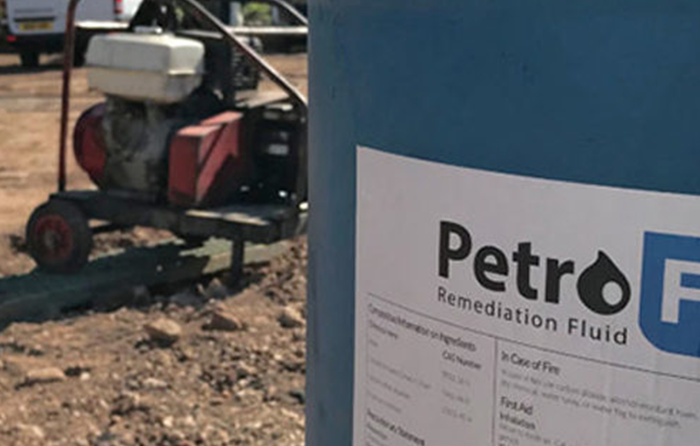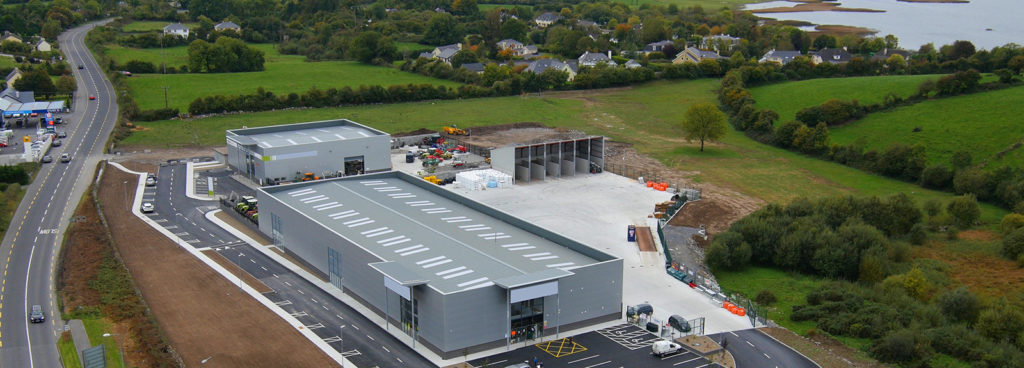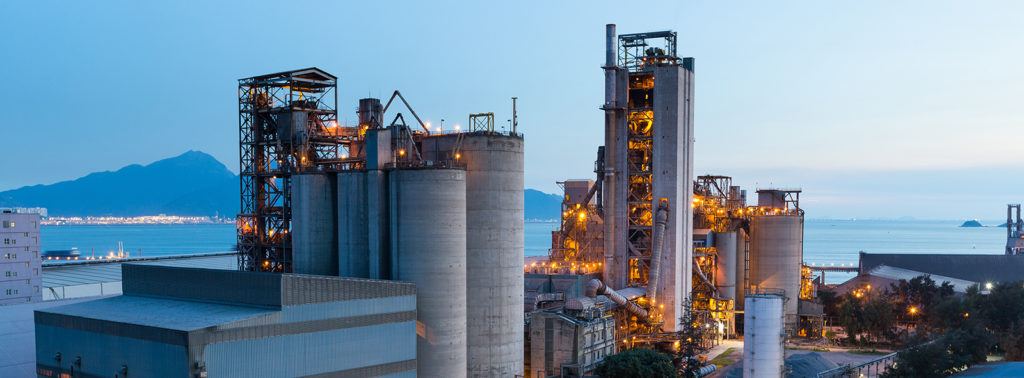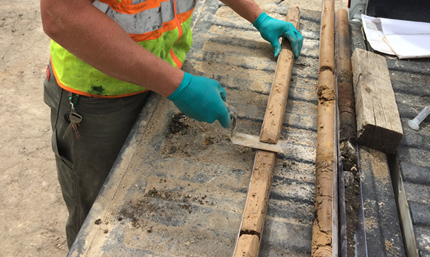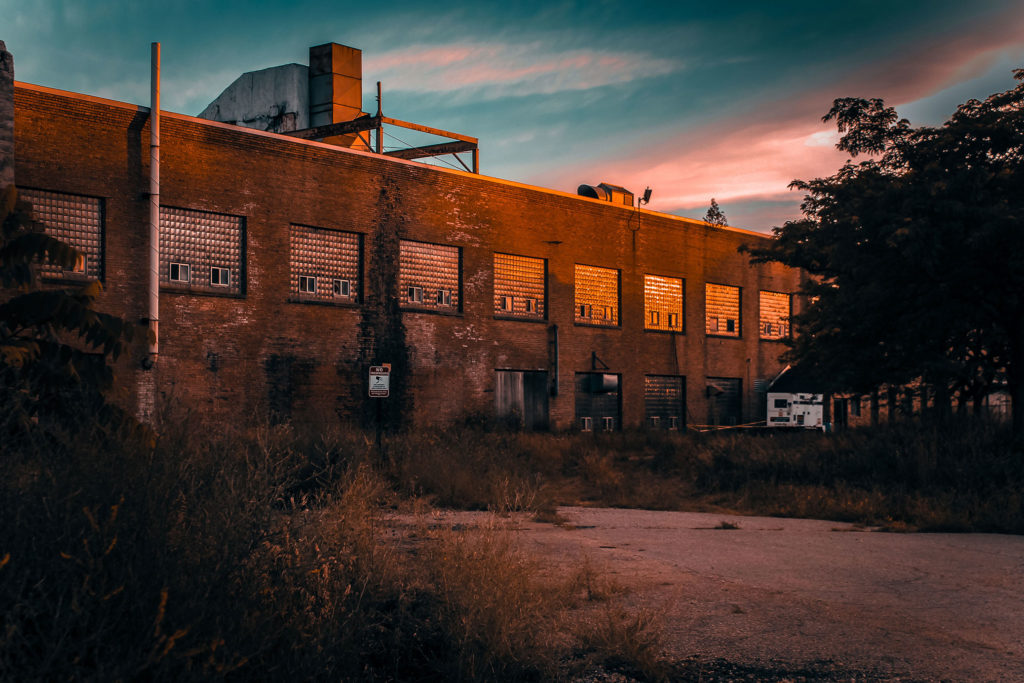Utilisation croissante d’une solution injectable de fer zéro valent (ZVI) colloïdal et avantages de la sulfuration
Langue: français
Accès: gratuit
Intervenants: Mariangela Donati, Aurélien Triger et Kris Maerten
Dans ce webinaire Mariangela Donati, notre Directrice région France, accompagnée de Kris Maerten, Directeur technique Europe chez Regenesis et Aurélien Triger, Représentant de France chez REGENESIS, a abordé l’utilisation du fer zéro valent sulfuré pour traiter les polluants chlorés.
Ce webinaire a présenté les avantages de l’utilisation d’une suspension colloïdale de fer zéro valent (ZVI) sulfuré comme puissant amendement pour la dépollution des hydrocarbures chlorés, pesticides, et autres substances toxiques dans le sol et les nappes. Depuis le lancement du S-MicroZVI en 2018, plus d’une centaine de sites dans le monde ont été traités grâce à cette technologie avancée de réduction chimique in situ (ISCR).
Ce webinaire consacré au ZVI sulfuré a porté sur :
- Les principes de fonctionnement des technologies ZVI par réduction chimique abiotique
- Les avantages de la sulfuration et ses effets sur la sorption, la réactivité et la rémanence : appuyés par nos dernières recherches
- Les récentes études en laboratoire sur la structure et le comportement du S-MicroZVI
- La méthode d’application du produit et son utilisation combinée avec le charbon actif colloïdal et la déchloration réductrice anaérobie
- Des études de cas aux États-Unis et en Europe
La présentation a porté sur l’optimisation d’une solution liquide de fer zéro valent (ZVI) en vue d’un traitement in situ efficace :
- Réactivité – Mécanismes de réaction du S-MicroZVI et effet de la sulfuration
- Distribution – Stabilité de la suspension de ZVI colloïdal et injectabilité, comparaisons évidentes avec le ZVI courant
- Rémanence – Effet de la sulfuration pour minimiser la passivation due à l’hydrolyse et à la formation d’oxydes
- Simplicité d’utilisation – Protocoles de mélange et d’injection d’un amendement colloïdal
Vous trouverez aussi une session questions-réponses à la fin du webinaire.
À propos des intervenants:
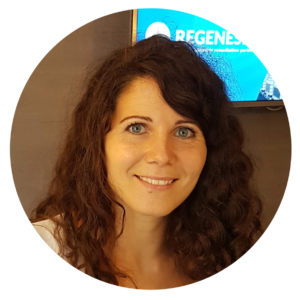
Mariangela Donati (ingénieure) –
Directrice région
Mariangela accompagne les clients en France dans le choix, la conception et l’évaluation des traitements de dépollution, en s’appuyant sur toute la gamme de technologies REGENESIS disponibles. Mariangela a étudié à l’université de Bologne. Elle a participé à une étude de développement en statistiques et géostatistiques appliquées aux concentrations de nitrates dans les eaux de surface à l’École des Mines de Paris et, en 2014, elle a obtenu un master en génie de l’environnement. Par la suite, elle a acquis une expérience professionnelle en France et en Italie dans le secteur de l’environnement, notamment en géostatistiques et gestion des sites pollués.

Kris Maerten (ingénieur) –
Directeur technique, Europe
Kris est un ingénieur en environnement chevronné, disposant de 22 années d’expérience dans l’industrie de la dépollution des sols et des eaux souterraines. En qualité de directeur technique REGENESIS, il dirige une équipe d’ingénieurs et de spécialistes en environnement, de niveau doctorat, très expérimentés, qui supervisent l’ensemble des travaux de conception technique partout en Europe. À ce jour, Kris a expertisé des milliers de sites, à des fins d’utilisation des technologies de dépollution in situ, notamment la réduction chimique in situ (ISCR), l’oxydation chimique (ISCO), la biostimulation aérobie et anaérobie, la stabilisation et l’amélioration des systèmes d’extraction. Dans le cadre d’une approche de concertation, Kris travaille en étroite collaboration avec les clients en vue de proposer la meilleure solution pour chaque site. Kris conseille les clients qui utilisent nos produits dans plus de 20 pays en Europe et ailleurs dans le monde.
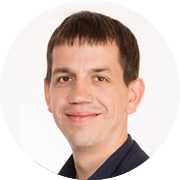 Aurélien Triger (docteur) –
Aurélien Triger (docteur) –
Représentant REGENESIS, France
Aurélien est ingénieur en Eau et Environnement et docteur en procédés pour l’environnement. Il travaille depuis plusieurs années dans le domaine des sites et sols pollués et notamment sur des problématiques techniques liées aux traitements in-situ et sur site : bio stimulation aérobie et anaérobie, ISCR, ISCO.
Regarder l’enregistrement du webinaire
Webinar: Een nieuwe methode voor de sanering van petroleum koolwaterstoffen
Casestudy’s van de sanering van koolwaterstoffen met in-situ sorptie en gestimulerende anaërobe afbraak
Taal: Nederlands
Kosten: Gratis
In deze webinar bespreekt Kris Maerten verscheidene casestudy’s waarbij vloeibare actieve kool is gebruikt voor de sanering van bodem- en grondwaterverontreiniging met petroleumkoolwaterstoffen.
PetroFix® is een vloeistof met gesuspendeerde, colloïdale actieve kool (1 – 2 µm) en een mix van elektronenacceptoren voor de stimulatie van de microbiële afbraak.
De technologie zorgt voor een snelle en duurzame behandeling van sterk verontreinigde bodems met koolwaterstoffen en wordt ondermeer toegepast bij historische verontreinigingen die niet of onvoldoende kunnen worden ontgraven en bij calamiteiten van brandstofverlies en lekken.
Deze webinar duurt ongeveer 1 uur en behandelt:
- Uitgebreide uitleg van het saneringsproces
- Snelle sorptie van de petroleumkoolwaterstoffen
- Verbeterde anaërobe oxidatie
- Praktische toepassingsscenario’s
- Injectiemethodes
- Toepassing bij ontgravingen
- Preventieve benaderingen
- Bespreking van meerdere casestudy’s
- Lessen uit praktijkervaring
- Q&A sessie
Deze webinar is bedoeld voor milieu-adviseurs, milieukundig projectingenieurs, aannemers, probleemhouders, regelgevende instanties. OVAM erkent deze webinar als permanente bijscholing voor bodemsaneringsdeskundigen op vertoon van een attest. Attesten/deelnemingscertificaten worden op verzoek verstrekt.
Voor toegang tot deze on-demand webinar, vul het formulier op deze pagina in.
Over de spreker:
 Kris Maerten
Kris Maerten
Technical Manager, Europe | REGENESIS
Als Technical Manager heeft Kris de leiding over een team van ervaren milieukundig ingenieurs die instaan voor alle saneringsontwerpen met de producten van REGENESIS in Europe. Hij heeft zelf meer dan 2000 saneringsontwerpen gemaakt en is betrokken geweest in saneringswerken in een vijftiental landen in Europa en ook internationaal, zowel op het vlak van ontwerp en uitvoering, als evaluatie van de resultaten. Kris is ook District Manager voor de Benelux waar hij naast technisch verantwoordelijke ook commercieel verantwoordelijke is.
Over ons:
REGENESIS is een internationaal bedrijf dat gespecialiseerd is in producten voor in-situ bodemsaneringen. We hebben 25 jaar ervaring in de ontwikkeling en wereldwijde toepassing van producten die in de bodem geïnjecteerd worden voor de sanering van grondwaterverontreiniging.
Bekijk de Webinar
In Situ Remediation within Bedrock: An exploration of the challenges and solutions using case studies in various geological settings
Language: English
Presenter: Jack Shore (REGENESIS)
In situ remediation of organic contaminants can become much more challenging when treatment is required within bedrock aquifers. The added challenges include:
- Contaminant distribution within fracture networks and the rock matrix
- Back diffusion of contamination from the primary porosity, during remediation
- Understanding contaminant flux, a function of groundwater velocity and contaminant concentration; and how that effects remedial design
- Wide ranges of concentrations, including the presence of Dense Non-Aqueous Phase Liquid
- Drilling and application costs in bedrock, at depth.
The webinar covers the challenges of the treatment within bedrock aquifers and discusses appropriate resources to help with the design of site investigations for fractured bedrock sites, enabling the deployment of robust in situ remediation and validation strategies.
Jack Shore explains how a range of engineered injectable substrates can be used to overcome these challenges; focusing on in situ anaerobic and aerobic biological degradation, sorption using micron-scale colloidal activated carbon, enhanced desorption coupled with vacuum extraction and in situ chemical oxidation.
The successful use of these techniques, used alone and in combination, is demonstrated through the presentation of four case studies of the in situ remediation of sites impacted with chlorinated solvents, petroleum hydrocarbons and hexavalent chromium. The case studies also present remediation within different bedrock geologies.
The webinar is useful to anyone considering remedial options for sites underlain with bedrock, provides concepts to consider, and examples of remedial options in a variety of situations.
About the presenter:
 Jack Shore
Jack Shore
District Manager, UK & Scandinavia | REGENESIS
Jack is in charge of the UK and Scandinavian districts within REGENESIS. As part of this role, he manages a team providing technical support and design work to a mix of Design and Build Consultancies, Remediation Contractors and Blue-Chip Clients. Jack has over 10 years of experience within the remediation industry and most recently has successfully implemented the first injection of PlumeStop to effectively stabilise a PFAS plume in the EU. His experience ranges from supervising site investigations, developing in situ remediation designs, and managing large-scale remediation projects with multiple stakeholders.
Watch webinar recording
Trattamenti in situ di acque di falda contaminate da solventi clorurati
Trattamenti in situ di acque di falda contaminate da solventi clorurati
L’ing. Mariangela Donati e l’ing. Marcello Carboni illustrano diverse tecnologie di bonifica in situ mediante l’applicazione di substrati iniettabili per il trattamento di acquiferi contaminati da solventi clorurati. Durante il webinar vengono descritte nel dettaglio 3 diverse opzioni di trattamento disponibili, passando dall’ingegnerizzazione dei substrati organici per ottimizzare il profilo di rilascio e la distribuzione nel sottosuolo, all’uso di prodotti colloidali di ultima generazione:
- Declorurazione riduttiva potenziata mediante l’utilizzo di elettrodonatori organici a rilascio controllato di idrogeno
- Biodegradazione potenziata da adsorbimento in situ, mediante carbone attivo colloidale
- Riduzione chimica in situ (ISCR) mediante ferro zerovalente colloidale solfurato
In questo webinar hai l’opportunità di approfondire:
- I principi tecnici di funzionamento alla base delle tre tecnologie in situ
- Gli sviluppi tecnologici più recenti volti a migliorare le performance in termini di iniettabilità, profilo di rilascio, reattività, coiniettabilità con altri reagenti, semplicità di utilizzo
- I criteri di selezione delle tecnologie sulla base delle caratteristiche del sito in termini di contaminazione, geologia, tempistiche di trattamento e concentrazioni obiettivo
- Alcuni casi di studio applicativi che illustrano con esempi pratici i risultati ottenibili
- La possibilità di integrare le diverse tecnologie attraverso interventi per fasi successive o co-applicazione
La presentazione è strutturata attorno ai 4 requisiti fondamentali che sono necessari per rendere ogni tecnologia in situ efficace:
- Reattività: meccanismi di reazione dei prodotti con i contaminanti di interesse
- Distribuzione: dispersibilità, iniettabilità e raggi di influenza ottenibili
- Persistenza: estrema longevità di rilascio / trattamento, per poter dimensionare gli interventi attraverso applicazioni singole e minimizzare i costi di bonifica
- Facilità d’uso: utilizzo di attrezzatura di miscelazione e iniezione di semplice implementazione, e sicurezza per gli operatori di cantiere
Presentato da:
Ing. Mariangela Donati
Mediterranean District Manager, REGENESIS
L’ing. Donati, District Manager di REGENESIS per l’Italia, la Francia e altri paesi del Sud Europa, supporta i clienti nella selezione, nel dimensionamento e nella valutazione economica degli interventi di bonifica mediante le diverse tecnologie REGENESIS disponibili. L’Ing. Donati ha svolto i suoi studi all’Università di Bologna, dove ha conseguito nel 2014 una laurea magistrale in Ingegneria per l’Ambiente e il Territorio, avendo partecipato allo sviluppo di uno studio in ambito di statistica e geostatistica applicate alle concentrazioni di nitrati in acque superficiali presso l’École des Mines de Paris (Francia). Ha maturato successivamente esperienze lavorative pluriennali sia in Italia che all’estero nei settori ambientale, minerario, di geostatistica e di gestione dei siti contaminati nelle diverse fasi previste dagli iter procedurali.
Ing. Marcello Carboni
Regional Manager Europe, REGENESIS
L’ing. Carboni, in REGENESIS dal 2011, ha ricoperto fino al 2018 il ruolo di Mediterranean District Manager, fornendo per l’Italia e altri paesi nel Sud dell’Europa supporto tecnico e assistenza nelle applicazioni in campo dei prodotti REGENESIS presenti sul mercato. Nel suo ruolo attuale di Regional Manager coordina dal punto di vista tecnico e commerciale i diversi distretti europei, e valuta potenzialità di sviluppo in nuovi paesi. Precedentemente aveva maturato un’esperienza decennale nella progettazione e nella realizzazione di bonifiche di siti contaminati all’interno di una società italiana di consulenza e di realizzazione interventi. L’ing. Carboni ha conseguito nel 2001 la laurea in Ingegneria per l’Ambiente e il Territorio presso il Politecnico di Torino, avendo seguito parte degli studi accademici presso la Technische Universiteit Delft (TUDelft) nei Paesi Bassi, ed avendo partecipato presso la Universitat Politècnica de Catalunya (UPC) di Barcellona allo sviluppo di un progetto inter-universitario finanziato dalla Comunità Europea relativo allo studio del trasporto all’interno della zona vadosa dei contaminanti residui derivanti dal riutilizzo a fini irrigui di acque di scarico civili trattate.
Guarda la registrazione webinar:
Six Pilot-Scale Studies Evaluating the In-Situ Treatment of PFAS in Groundwater
In this webinar, guest speaker Rick McGregor, President of InSitu Remediation Services Ltd. discusses the details of a series of pilot-scale field studies he has carried out, to evaluate different in situ remedial approaches to treat PFAS in groundwater.
The pilot-scale field studies comprise the use of two chemical oxidants: hydrogen peroxide and sodium persulfate; as well as four adsorbents: Powdered Activated Carbon (PAC), Colloidal Activated Carbon (CAC) (this is our product PlumeStop), Ion-Exchange Resin (IER) and Biochar. The results of this work has recently been published in Wiley’s Remediation journal.
Various PFAS were detected within the pre-treatment groundwater including PFDS, PFBA, PFPeA, PFHxA, PFHpA, PFOA, PFOS and PFNA with concentrations ranging up to 18,000 ng/L for PFPeA. Six pilot-scale permeable reactive zones (PRZs) were created in a shallow, unconfined aquifer situated in a slightly saline, sulfate-iron reducing environment. The groundwater was also impacted with gasoline-range petroleum hydrocarbons along with various additives including MTBE and TBA.
Rick is joined by Maureen Dooley, Director of Strategic Projects at REGENESIS, who discusses in situ treatment of PFAS using colloidal activated carbon to eliminate PFAS risk at a low cost.
Key points discussed in this webinar:
- Comparisons will be made of reagent distribution across the injection depth, showing CAC and persulfate distributed most uniformly.
- Discussion will be made of disproportionate amounts of PAC and Biochar enter the monitoring well packing and how this may affect results.
- Chemical oxidation appears ineffective on PFAS.
- PAC, IER and Biochar show initial reductions in concentrations, followed by contaminant break-through.
- Only CAC shows sustained treatment, with all PFAS constituents remaining at ‘non-detect’ for 550 days of monitoring.
- Case studies will show application approaches and actual results.
- Future projects and ongoing academic studies in partnership with 3 universities.
About the presenters:
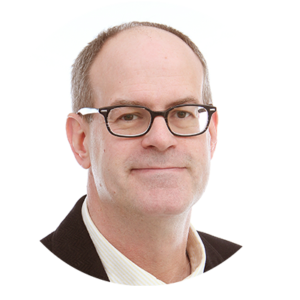 Rick McGregor
Rick McGregor
President | InSitu Remediation Services Ltd.
Rick McGregor has over 26 years’ experience in groundwater and soil assessment and remediation. He has worked in over 30 countries and has authored numerous papers on groundwater assessment and remediation. Rick holds a MSc from the University of Waterloo in hydrogeology and geochemistry and is a Certified Ground Water Professional in Canada and the United States.
 Maureen Dooley
Maureen Dooley
Director of Strategic Projects| REGENESIS
Maureen Dooley has over 25 years’ experience in the environmental industry including project management, research and development, senior technical oversight, remedial design and laboratory management. Ms. Dooley’s current position is the Director of Strategic Projects at REGENESIS. In her role she provides technical leadership for complex soil and groundwater remediation projects across North America, as well as remediation design, strategy and business development throughout north-eastern United States and eastern Canada. As part of her responsibilities she has reviewed hundreds of projects and provided recommendations for remediation. In addition, she has completed numerous treatability studies designed to evaluate the remediation of a wide range of contaminants, including chlorinated solvents, petroleum hydrocarbons, and emerging contaminants like PFAS.
Watch webinar recording
Planning for flexibility: a case study in creating robust remediation designs that can handle the realities onsite
In this webinar, organised by the East Land Quality Forum (ELQF), Jack Shore the District Manager for the UK and Scandinavia at REGENESIS discusses the remedial activities at a historic former timber yard. The site was impacted with high levels of petroleum hydrocarbons and a mixture of pentachlorophenol, trimethyl tin and pesticides (lindane, dieldrin and aldrin, amongst others). The timber yard had been demolished in the 1980s and an office facility was built. Due to divestment, the office parks owner wished to remediate the site before the sale. An integrated remediation strategy was devised to accelerate close out.
This webinar:
- Demonstrates the activities undertaken including:
- Flux zone identification
- Excavation of impacted vadose zone soils
- Injection testing
- In situ chemical oxidation (ISCO)
- In situ sorption
- Enhanced natural attenuation
- Illustrates the challenges overcome
- Presents the results of the treatment
About the ELQF:
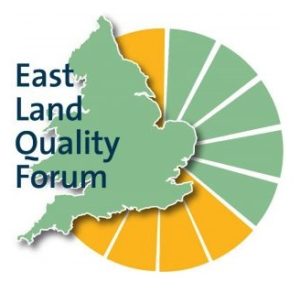
The ELQF is a dedicated voluntary body offering free seminars for land quality practitioners within the East of England. The aim of the Forum is to allow all those with a professional interest in land quality in the East of England to come together around three times a year. The Forum will meet, present and receive interesting papers, network in an open and friendly environment and collectively support work towards continuously improving our region’s land quality.
Watch this free webinar
Performing Due Diligence to Manage PFAS Liability Risk
In this webinar we are pleased to have a special presentation from Ned Witte, Attorney at Godfrey & Kahn, S.C. Ned’s presentation will discuss current trends and best practices for performing due diligence to manage PFAS liability risk. He will be joined by Ryan Moore, PFAS Program Manager at REGENESIS, who will discuss proven, low-cost in situ remediation solutions to mitigate risk from PFAS contamination in groundwater.
- A practical assessment of managing PFAS in environmental due diligence
- Key points of consideration in the potential identification of certain PFAS as “hazardous substances” under federal law
- Best practices for consulting and business professionals in this evolving field
- Proven solutions from REGENESIS to mitigate risk from PFAS contamination in groundwater
Attention to the emerging contaminants known as PFAS (per- and polyfluoroalkyl substances) has evolved during the last several years, from awareness and alarm to acceptance and adaptation. As part of this evolving awareness, PFAS have now become a focal point of real property and business transactions, where customary environmental due diligence has included use of the ASTM Phase I Environmental Site Assessment. To the surprise of many, however, the ASTM process does not presently include consideration of PFAS.
View this free webinar
Traiter les fortes concentrations d’hydrocarbures pétroliers : études de cas d’adsorption in situ
Langue: Français
Intervenants: Mariangela Donati, Aurélien Triger et Kris Maerten
Dans ce webinaire, nous avons abordé la théorie et l’utilisation pratique de charbon actif colloïdal pour traiter la pollution due à des déversements et fuites d’hydrocarbures et à des panaches historiques.
PetroFix® est une suspension colloïdale de microparticules de charbon actif (1 – 2 µm) et d’accepteurs d’électrons assurant une biostimulation. Le traitement combine l’adsorption in situ et la biodégradation syntrophique. Ceci permet de cibler les fortes concentrations d’hydrocarbures pétroliers, en apportant un traitement immédiat et des résultats durables en dépollution. La présentation a porté sur:
- Descriptif détaillé du procédé de dépollution
- Adsorption rapide des hydrocarbures pétroliers
- Biostimulation anaérobie
- Scénarios d’application
- Injection « direct push »
- Injection via des puits
- Application en fond de fouille
- Approches préventives
- Analyse de nombreuses études de cas
- Enseignements tirés de l’expérience sur le terrain
Ce webinaire intéresse les professionnels en charge de la conception et de la réalisation de projets de dépollution sur des sites contaminés par des hydrocarbures, les entreprises qui interviennent en urgence à la suite d’événements accidentels, les organismes de contrôle et les propriétaires ou détenteurs de sites nécessitant une dépollution.
À propos des intervenants:

Mariangela Donati (ingénieure) –
Directrice région
Mariangela accompagne les clients en France dans le choix, la conception et l’évaluation des traitements de dépollution, en s’appuyant sur toute la gamme de technologies REGENESIS disponibles. Mariangela a étudié à l’université de Bologne. Elle a participé à une étude de développement en statistiques et géostatistiques appliquées aux concentrations de nitrates dans les eaux de surface à l’École des Mines de Paris et, en 2014, elle a obtenu un master en génie de l’environnement. Par la suite, elle a acquis une expérience professionnelle en France et en Italie dans le secteur de l’environnement, notamment en géostatistiques et gestion des sites pollués.

Kris Maerten (ingénieur) –
Directeur technique, Europe
Kris est un ingénieur en environnement chevronné, disposant de 22 années d’expérience dans l’industrie de la dépollution des sols et des eaux souterraines. En qualité de directeur technique REGENESIS, il dirige une équipe d’ingénieurs et de spécialistes en environnement, de niveau doctorat, très expérimentés, qui supervisent l’ensemble des travaux de conception technique partout en Europe. À ce jour, Kris a expertisé des milliers de sites, à des fins d’utilisation des technologies de dépollution in situ, notamment la réduction chimique in situ (ISCR), l’oxydation chimique (ISCO), la biostimulation aérobie et anaérobie, la stabilisation et l’amélioration des systèmes d’extraction. Dans le cadre d’une approche de concertation, Kris travaille en étroite collaboration avec les clients en vue de proposer la meilleure solution pour chaque site. Kris conseille les clients qui utilisent nos produits dans plus de 20 pays en Europe et ailleurs dans le monde.

Aurélien Triger (docteur) –
Représentant REGENESIS, France
Aurélien est ingénieur en Eau et Environnement et docteur en procédés pour l’environnement. Il travaille depuis plusieurs années dans le domaine des sites et sols pollués et notamment sur des problématiques techniques liées aux traitements in-situ et sur site : bio stimulation aérobie et anaérobie, ISCR, ISCO.
Regarder l’enregistrement du webinaire
Design Verification Tests: l’importanza di indagini specifiche per ottimizzare i trattamenti in situ
Presentato da:
Ing. Mariangela Donati (Mediterranean District Manager),
Ing. Paola Goria (Technical Services Manager Mediterranean District)
I Design Verification Testing (DVT), indagini specifiche finalizzate al dimensionamento di interventi di bonifica, assumono fondamentale importanza nei trattamenti in situ di tipo passivo, in quanto per la progettazione di un intervento di bonifica è necessario avere informazioni specifiche che generalmente non vengono ricercate in fase di caratterizzazione. Le performance degli interventi di bonifica in situ infatti sono il risultato di molteplici fattori, tra cui i principali sono la corretta e dettagliata conoscenza delle caratteristiche geologiche, idrogeologiche e di contaminazione nelle effettive zone di flusso della massa dei contaminanti.
In questo webinar l’ing. Mariangela Donati e l’ing. Paola Goria illustrano diverse tecniche DVT affrontando i seguenti argomenti:
- Descrizione delle diverse attività di indagine avanzata e Design Verification Testing disponibili
- Approfondimento specifico sui campionatori passivi di flusso (di contaminanti e di acqua di falda), uno degli strumenti tecnici maggiormente utilizzati
- Differenze tra i DVT e le indagini di caratterizzazione del sito
- Casi di studio reali di siti contaminati in cui sono stati realizzati DVT, risultati ottenuti e ripercussioni sull’intervento e sul dimensionamento
Alla fine del webinar è presente una sessione Q&A (domande e risposte) in cui viene data risposta a varie domande.
Si ritiene che questo webinar possa essere di estremo interesse per chi opera professionalmente nella progettazione e nell’esecuzione di interventi di bonifica di siti contaminati, per gli Enti di controllo e per chi possiede o detiene siti oggetto di bonifica, in quanto fornisce un approfondimento tecnico su strumenti utili per migliorare le performance degli interventi di bonifica in situ: un trattamento con esito positivo si ottiene infatti solo grazie ad un’approfondita conoscenza delle caratteristiche di flusso e trasporto dei contaminanti all’interno dei diversi layer che compongono l’acquifero di interesse.
Presentato da:
 Ing. Mariangela Donati
Ing. Mariangela Donati
Mediterranean District Manager, REGENESIS
L’ing. Donati, District Manager di REGENESIS per l’Italia e altri paesi del Sud Europa, supporta i clienti nella selezione, nel dimensionamento e nella valutazione economica degli interventi di bonifica mediante le diverse tecnologie REGENESIS disponibili. L’Ing. Donati ha svolto i suoi studi all’Università di Bologna, dove ha conseguito nel 2014 una laurea magistrale in Ingegneria per l’Ambiente e il Territorio, avendo partecipato allo sviluppo di uno studio in ambito di statistica e geostatistica applicate alle concentrazioni di nitrati in acque superficiali presso l’École des Mines de Paris (Francia). Ha maturato successivamente esperienze lavorative pluriennali sia in Italia che all’estero nei settori ambientale, minerario, di geostatistica e di gestione dei siti contaminati nelle diverse fasi previste dagli iter procedurali.
 Ing. Paola Goria
Ing. Paola Goria
Technical Services Manager Mediterranean District, REGENESIS
L’ing. Paola Goria è ben conosciuta nel settore delle bonifiche in ambito italiano, avendo un’esperienza pluridecennale nell’ambito delle bonifiche di siti contaminati. In REGENESIS, l’ing. Goria si occupa delle attività di dimensionamento e preparazione delle proposte e dell’assistenza tecnica pre e post intervento, in Italia e nei paesi che circondano l’area Mediterranea. L’ing. Goria ha conseguito nel 2001 la laurea in Ingegneria per l’Ambiente e il Territorio presso il Politecnico di Torino e arriva in Regenesis da una posizione di consulente in merito a progettazione di bonifiche, modellizzazione di flusso e trasporto di inquinanti, analisi di rischio; nel proprio percorso professionale ha inoltre maturato una profonda conoscenza relativa a diversi prodotti per interventi di bonifica in situ.
Guarda la registrazione webinar:
Using in situ bioremediation and liquid activated carbon for a TCE plume
Language: English
Presenters: Emma McAnaw (Golder Associates) & Jack Shore (REGENESIS)
About the presenters:
 Emma McAnaw
Emma McAnaw
Senior Hydrogeologist | Golder Associates (UK) Ltd
Emma McAnaw is a Senior Hydrogeologist and Project Manager with over 12 years’ experience in groundwater risk assessment and contaminated land characterisation and remediation. Emma has specialist experience in various aspects of hydrogeology and site characterisation and remediation, including: complex contaminated land site investigation and remediation design, management, and verification; risk assessment (controlled waters and human health), and groundwater abstraction feasibility through to licensing. Emma works across several market sectors within Golder including manufacturing, power, mining, and waste.
 Jack Shore
Jack Shore
District Manager, UK & Scandinavia | REGENESIS
Jack is in charge of the UK and Scandinavian districts within REGENESIS. As part of this role, he manages a team providing technical support and design work to a mix of Design and Build Consultancies, Remediation Contractors and Blue-Chip Clients. Jack has over 10 years of experience within the remediation industry and most recently has successfully implemented the first injection of PlumeStop to effectively stabilise a PFAS plume in the EU. His experience ranges from supervising site investigations, developing in situ remediation designs, and managing large-scale remediation projects with multiple stakeholders.

 Americas
Americas Europe
Europe Français
Français Deutsch
Deutsch Italiano
Italiano Español
Español
